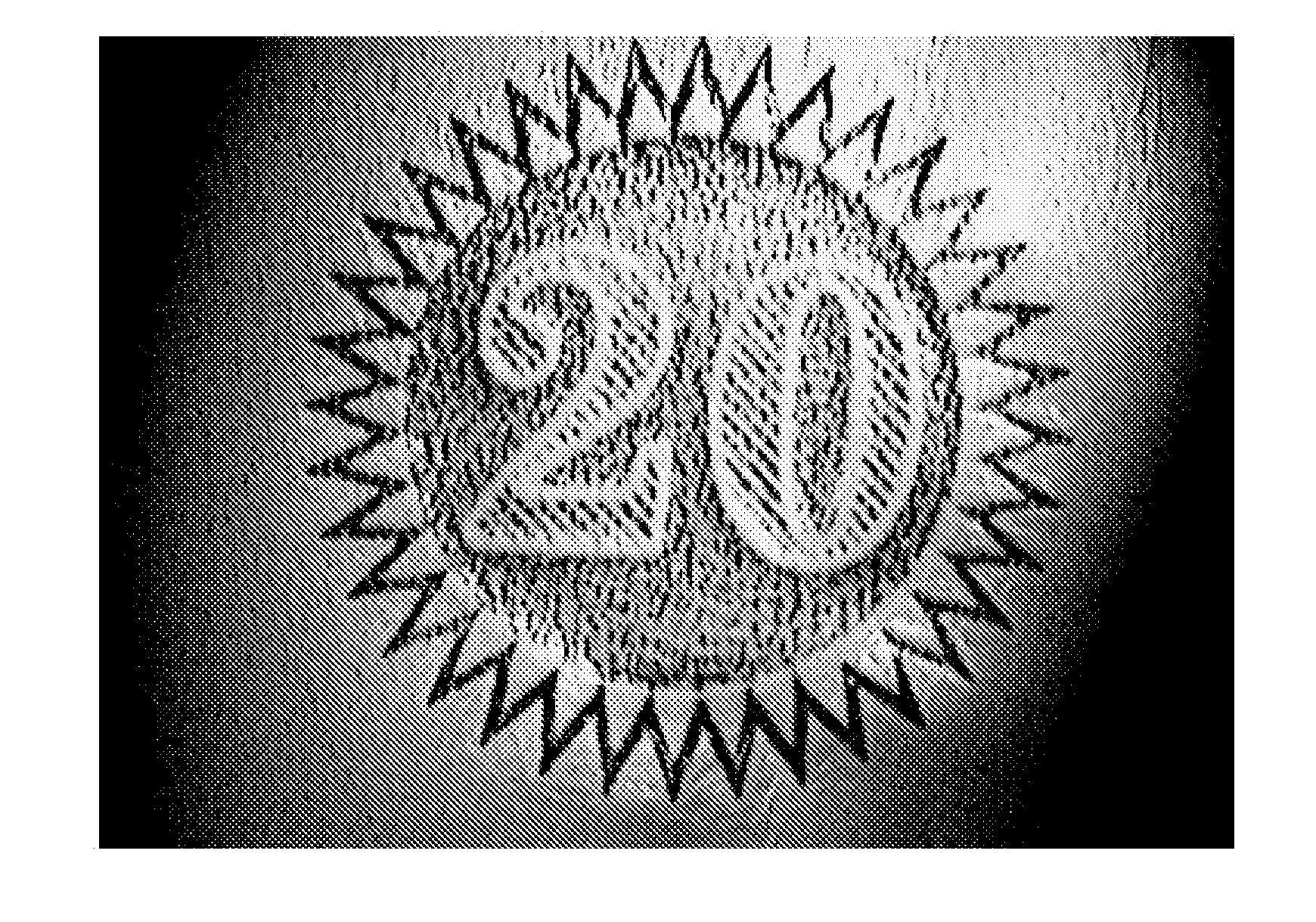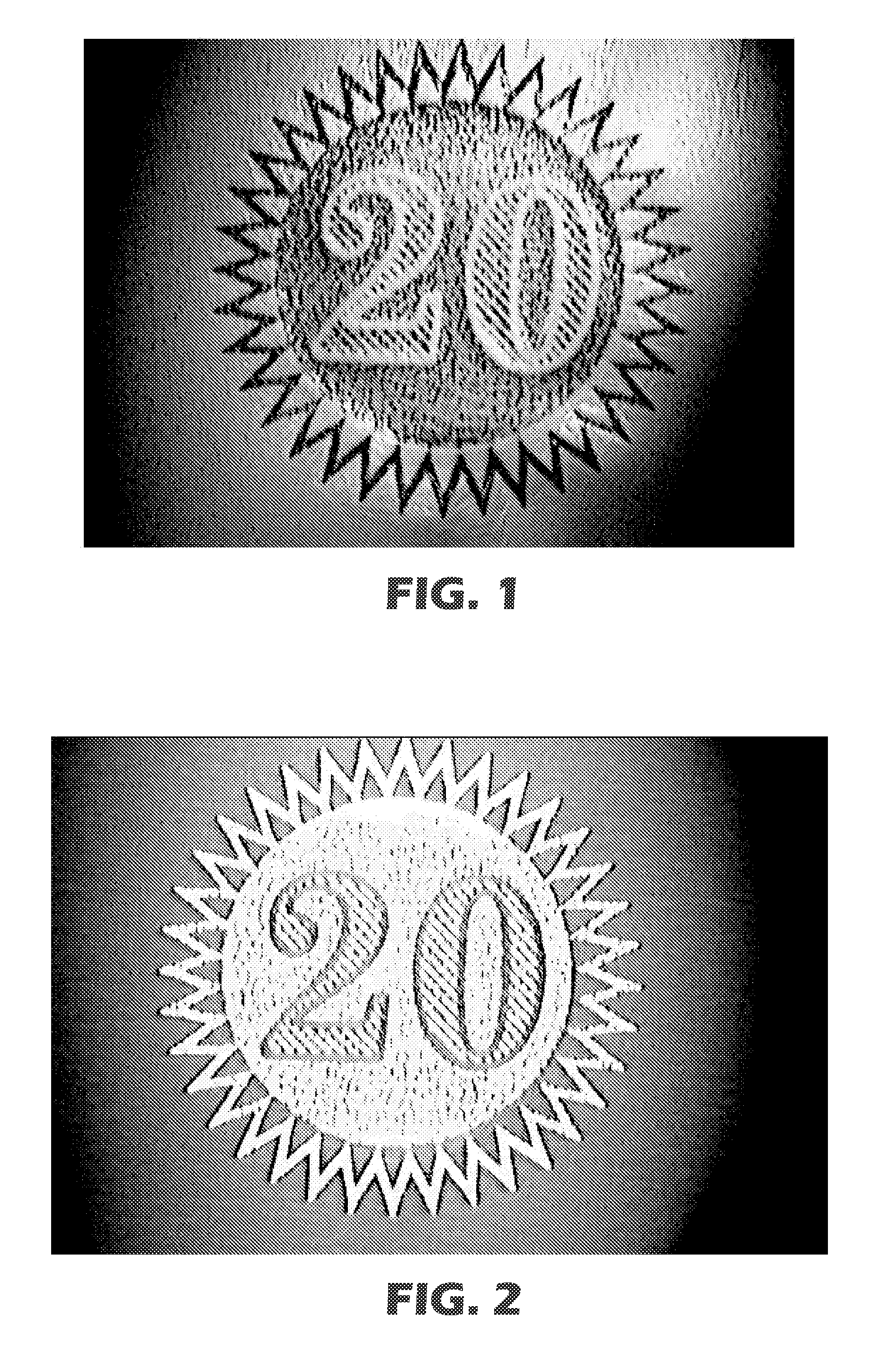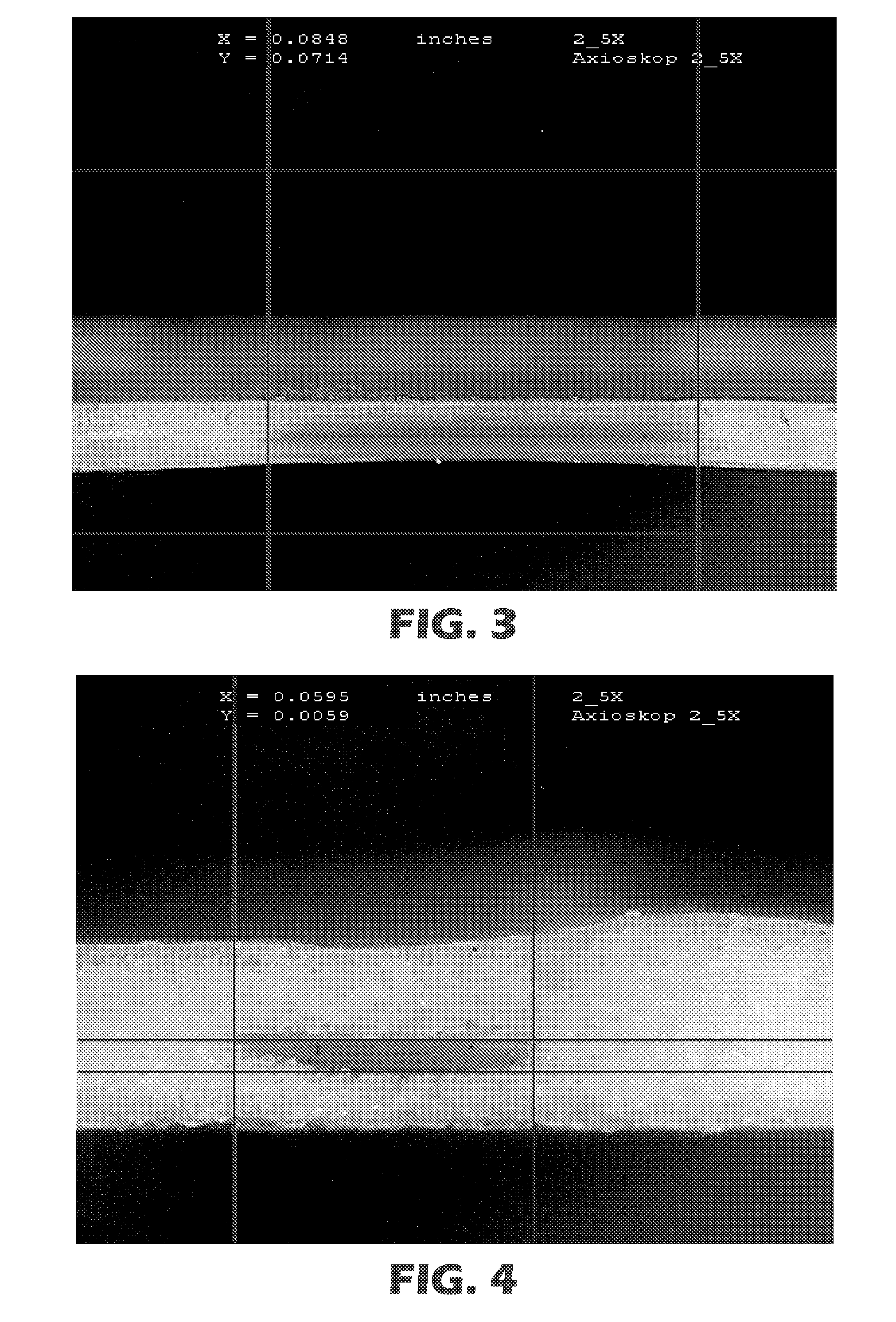Foam security substrate
- Summary
- Abstract
- Description
- Claims
- Application Information
AI Technical Summary
Benefits of technology
Problems solved by technology
Method used
Image
Examples
example 4
[0174] A laminate was prepared using two foam layers and a multilayer optical film (MOF) in a F / MOF / F sandwich. A mixture of 78% high melt strength polypropylene (Profax™ PF814, Montell North America, Inc., Wilmington, Del.), 7.5% conventional polypropylene, (PP 3376 Fina Inc., Dallas, Tex.), 10% elastomeric polyethylene, (Affinity™ 8200 Dow Chemical, Midland, Mich.), 2.5% wollastonite 520S, and 2.0% by weight of FM1307 chemical blowing agent (50% azodicarbonamide loaded in polyethylene) (Ampacet Co.,) was extruded in a 6.4 cm single screw extruder equipped with a Saxton single stage screw at 40 rpm and a temperature profile of 138° C.-226° C.-138° C. The exit melt temperature was 132° C., and the exit pressure was 84 kg / cm2 (1200 psi). Approximately half of the extruded mixture was split into two streams using a “T” junction in a 20.3 cm feedblock / die assembly at 182° C. There was no nonfoam core layer for this sample. The resulting foam sheet was cooled on a chrome cast roll at 38...
example 5
[0177] The foam laminate of Example 4 was embossed using the process described in the Test Methods section. The laminate was embossed at 91° C. and a pressure of 39 kg / lineal cm of nip at 1.5 m / min. The images were embossed, providing a unique optical security element. The indicia from the 140-micron features were multi-colored with a gold-leaf look in reflected light. The indicia was multi-colored in transmitted light (i.e., when holding the embossed image to a light source) with green, blue, and purple being visible. The difference in transmitted color between the unembossed and embossed sample of Example 4 is due to the compression of the MOF layers, which changes the optical properties of the film.
example 6
[0179] A laminate was prepared as in Example 4 except the multilayer optical film was flame embossed using the process described in U.S. Pat. No. 6,096,247. The film was passed at 80 meter / min over an open natural-gas powered flame (50 BTU / hr) provided by a ribbon burner (Flynn Burner Corporation, New Rochelle, N.Y.) at an air:fuel setpoint ratio of 9.6. The backside of the film was in contact with a chill roll covered with chlorosulfonated elastomer (American Roller Company, Union Grove, Wis.). The film was then embossed at 93° C. and a pressure of 6.2 kg / cm2.
[0180] The flame embossed MOF and foam layers were then laminated and embossed using the same procedure and conditions as in Example 4. The indicia from the 140-micron features were multi-colored with a gold-leaf look in reflected light. In reflected light, the MOF strips appeared to be yellow-orange in color; however, in transmitted light the strips are light blue, providing a rapid, unique verification of authenticity. The ...
PUM
| Property | Measurement | Unit |
|---|---|---|
| Temperature | aaaaa | aaaaa |
| Percent by mass | aaaaa | aaaaa |
| Force | aaaaa | aaaaa |
Abstract
Description
Claims
Application Information
 Login to View More
Login to View More - R&D
- Intellectual Property
- Life Sciences
- Materials
- Tech Scout
- Unparalleled Data Quality
- Higher Quality Content
- 60% Fewer Hallucinations
Browse by: Latest US Patents, China's latest patents, Technical Efficacy Thesaurus, Application Domain, Technology Topic, Popular Technical Reports.
© 2025 PatSnap. All rights reserved.Legal|Privacy policy|Modern Slavery Act Transparency Statement|Sitemap|About US| Contact US: help@patsnap.com



